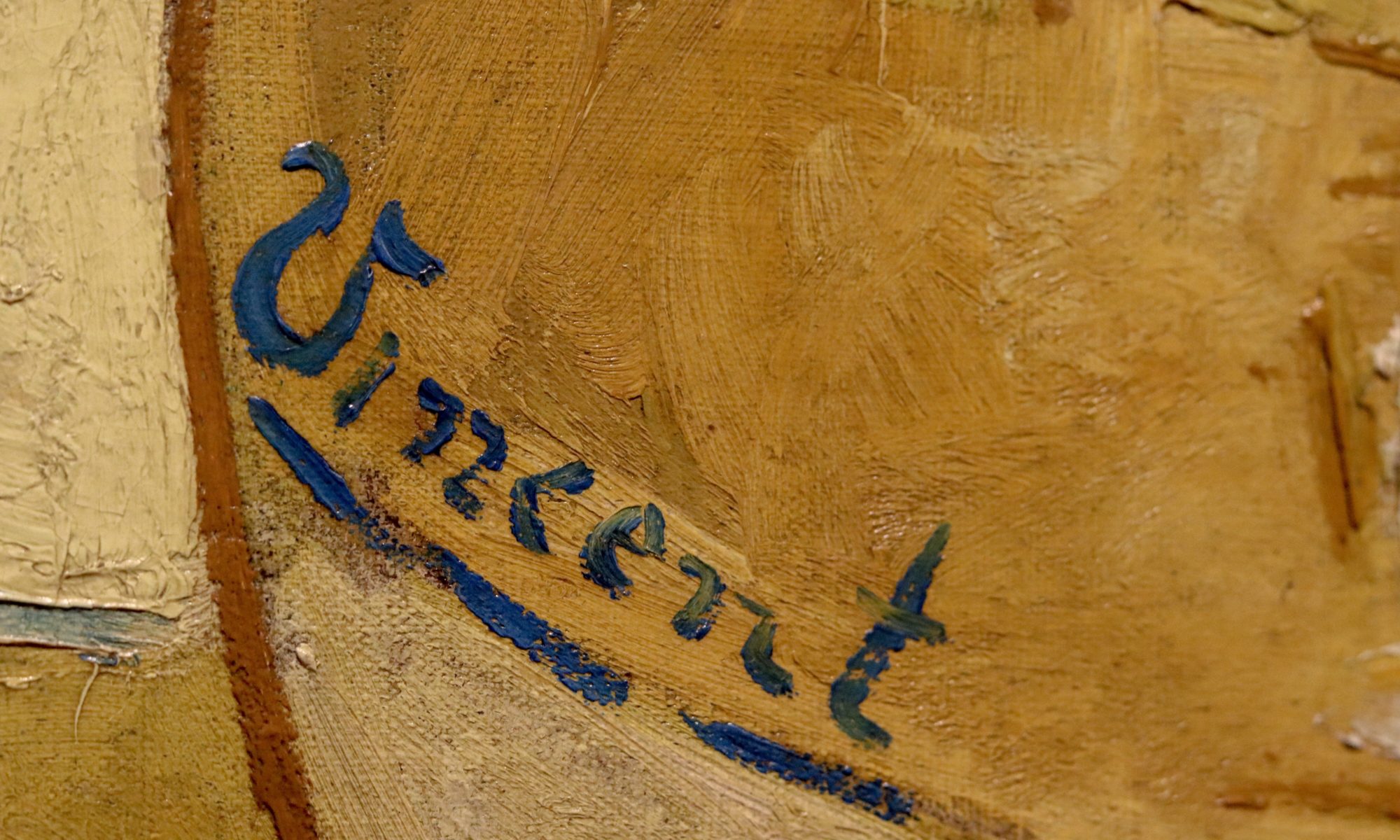Tate Britain, Milbank SW1P, from today (27th March) until 11th August 2019
A new exhibition at the Tate Britain art gallery, the home of the Tate’s pre-1914 British art collection, brings together some Vincent van Gogh paintings that have rarely if ever been seen together, or in public at all, in the biggest collection of his work in a decade. The show includes works from private collections such as Trunk of an Old Yew Tree, painted in Arles in late 1888 and showing the town bisected by the tree, as well as from other galleries including the Musée d’Orsay in Paris, the Van Gogh Museum in Amsterdam and the Pushkin State Museum of Fine Arts in Moscow, which has loaned The Prison Courtyard, van Gogh’s only painting of London, albeit based on an earlier 1872 engraving by Gustav Doré.
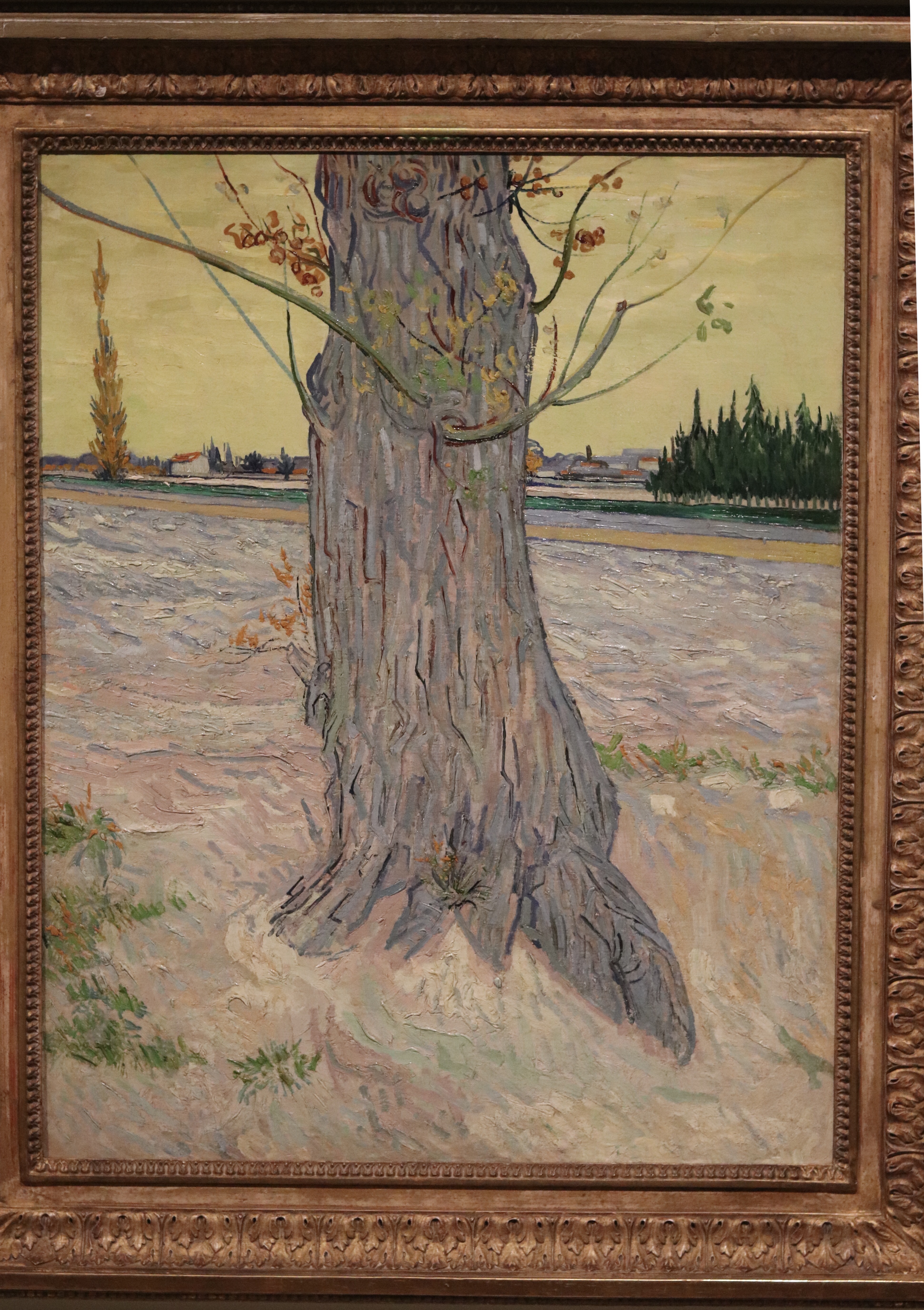
I visited Paris in January and saw the mesmerising Starry Night Over the Rhône, and now here it is in London.
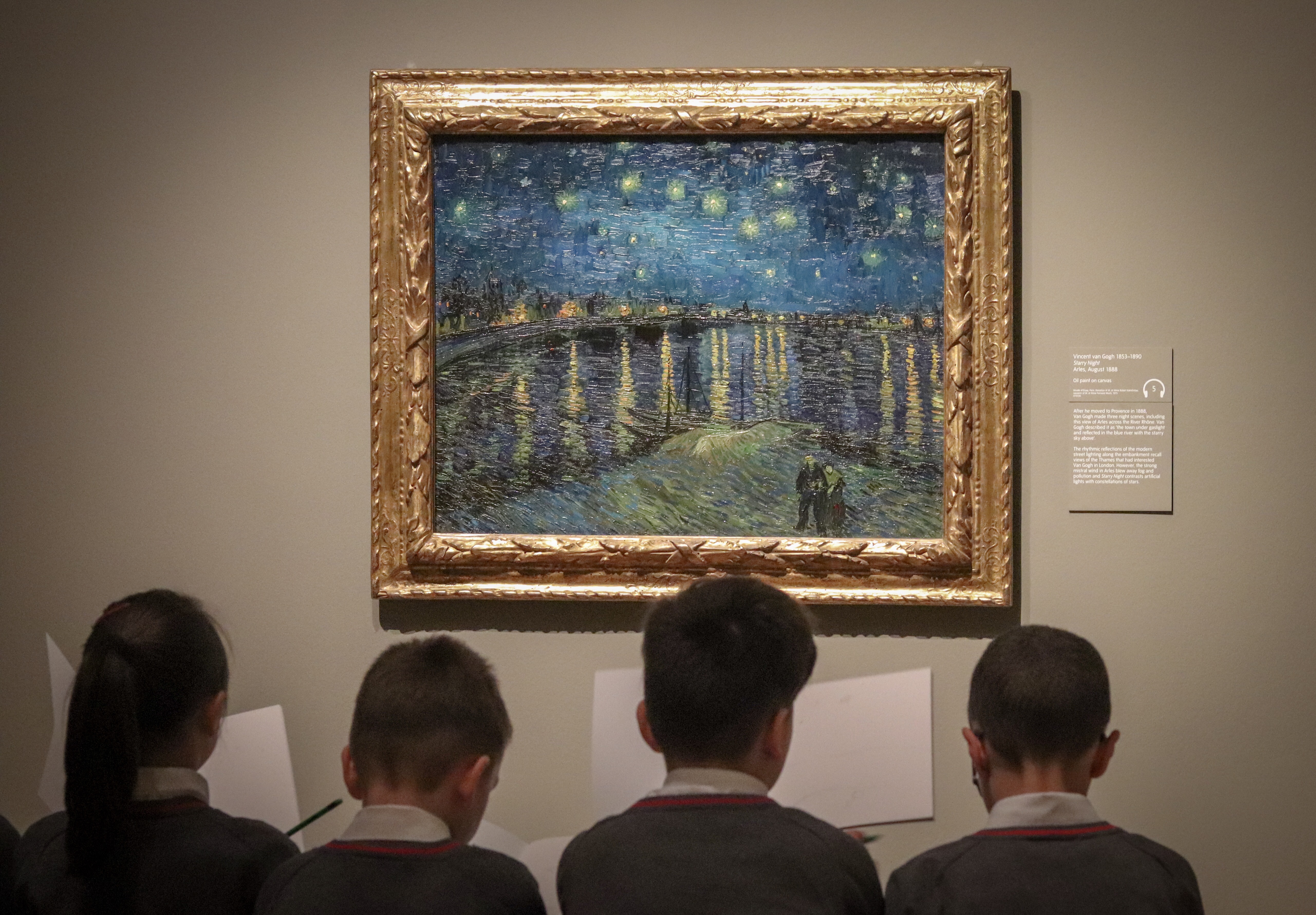
A very well-known piece by the Dutch artist and it’s the second big painting in the exhibition. But with an artist like Vincent van Gogh, there is no shortage of wonderful art.
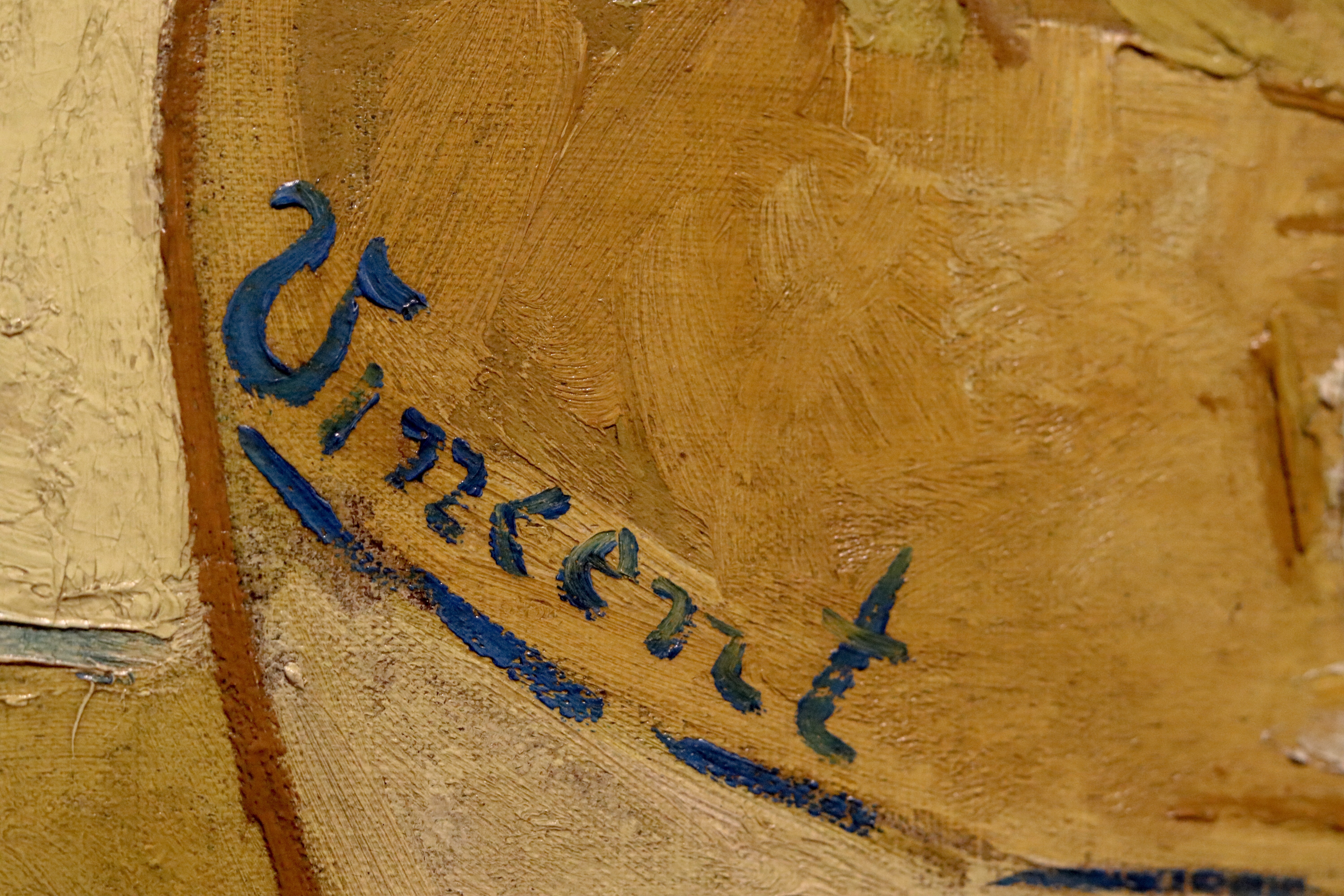
Sunflowers (F454), his utterly iconic still life of the bright yellow flowers in a golden vase, returns to Millbank for the first time since 1961 when the painting moved to the National Gallery in Trafalgar Square. It’s surrounded in this exhibition by other similar bright, colourful paintings of flowers, the notion being that they were all van Gogh-inspired. Whether this is accurate is for the art experts to argue over, but it makes for a very pleasant room.
At my count, there are more than sixty van Gogh works in the exhibition – mainly paintings of course, but some graphite and chalk sketches, some letters to his brother Theo, and lithographs. On first glance it might seem unnecessary to have works by other artists, but after going around a few times and reading the captions and wall quotes dotted around (look up) it starts to make sense. The large number of works by the Dutch artist that are here avoid any accusations of mere bulking out. It’s always interesting to see different artists’ work together, especially one who in his lifetime was not financially successful at all. You get the sense that there was so much more to come from him, there being no slowing down of his output even when he was in the asylum towards the end of his life. That’s a much wider conversation we are having today about mental health, of course.
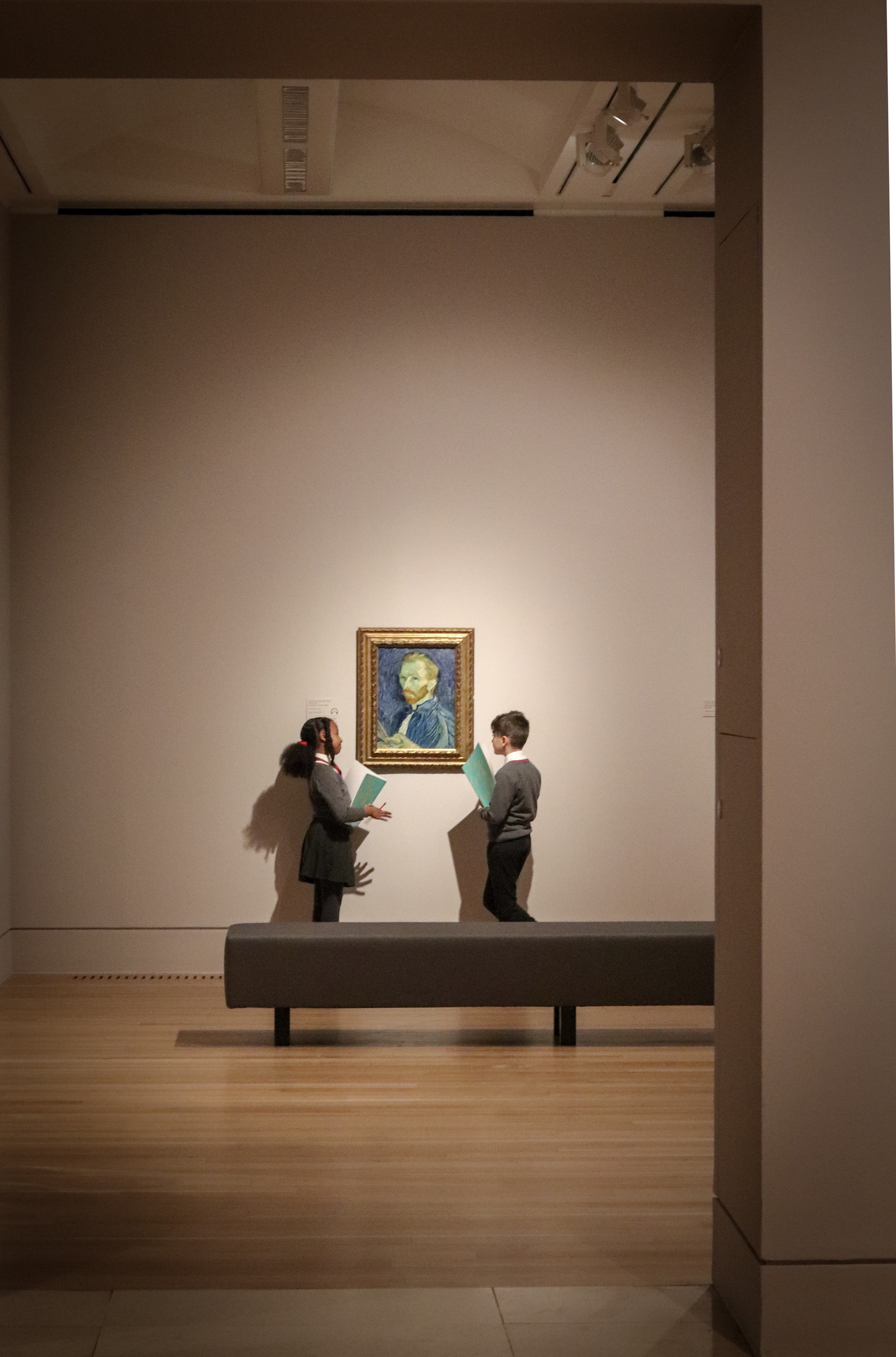
Schoolchildren admire ‘Self-Portrait’ (August 1889) from the National Gallery of Art, Washington D.C.
The EY exhibition: Van Gogh and Britain is open now. Tickets are £22/£20 concessions or free for Tate members. If you are aged 16- 25, join Tate Collective for £5 tickets. Advanced booking is advised.

